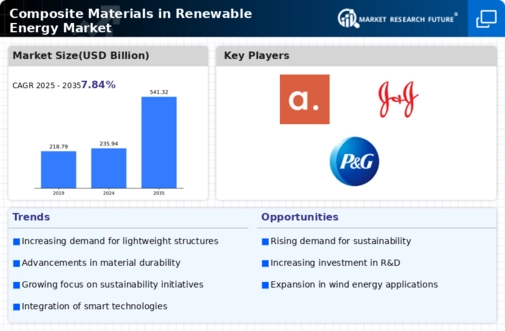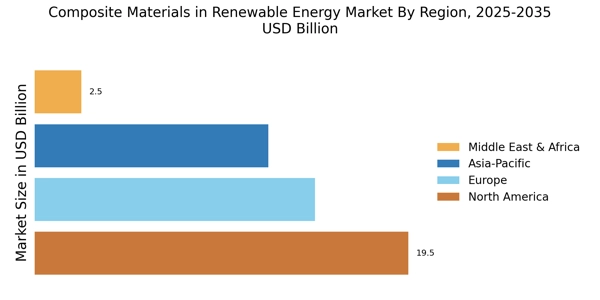Government Incentives and Policies
Supportive government policies and incentives play a crucial role in driving the Composite Materials in Renewable Energy Market. Many governments are implementing tax credits, grants, and subsidies to promote the adoption of renewable energy technologies. For instance, initiatives aimed at increasing the use of wind and solar energy often include provisions for the use of advanced materials, including composites. This regulatory support not only encourages investment in renewable energy projects but also stimulates research and development in composite materials. As a result, the market for composite materials is expected to expand as more projects are initiated under favorable policy frameworks.
Rising Demand for Renewable Energy
The increasing The Composite Materials in Renewable Energy Industry. As nations strive to meet ambitious carbon reduction targets, the demand for wind, solar, and other renewable energy technologies has surged. For instance, the International Energy Agency projects that renewable energy capacity will grow significantly, with wind and solar expected to dominate new installations. This trend necessitates the use of advanced composite materials, which offer superior strength-to-weight ratios and corrosion resistance, enhancing the efficiency and longevity of renewable energy systems. Consequently, manufacturers are increasingly investing in composite materials to meet the growing demand, thereby propelling the market forward.
Growing Awareness of Environmental Impact
The heightened awareness of environmental issues is significantly influencing the Composite Materials in Renewable Energy Market. Consumers and businesses alike are increasingly prioritizing sustainability, leading to a shift towards renewable energy solutions. This trend is driving the demand for composite materials, which are often more environmentally friendly compared to traditional materials. For example, composites can be designed to be recyclable or made from renewable resources, aligning with the sustainability goals of many organizations. As the focus on reducing carbon footprints intensifies, the market for composite materials in renewable energy applications is likely to experience robust growth.
Innovations in Composite Material Technologies
Technological advancements in composite materials are transforming the landscape of the Composite Materials in Renewable Energy Market. Innovations such as the development of bio-based composites and improved manufacturing processes are enhancing the performance and sustainability of these materials. For example, advancements in resin systems and fiber technologies are enabling the production of lighter and stronger components for wind turbine blades and solar panels. According to recent studies, the use of advanced composites can lead to a reduction in weight by up to 30%, which directly impacts energy efficiency. As these technologies continue to evolve, they are likely to drive further adoption of composite materials in renewable energy applications.
Increased Investment in Renewable Energy Infrastructure
Investment in renewable energy infrastructure is a vital driver for the Composite Materials in Renewable Energy Market. As countries and corporations allocate substantial funds towards the development of renewable energy projects, the need for durable and efficient materials becomes paramount. Reports indicate that investments in renewable energy infrastructure are expected to reach trillions of dollars over the next decade. This influx of capital is likely to spur demand for composite materials, which are essential for constructing wind turbines, solar panels, and other renewable energy systems. The ongoing expansion of renewable energy infrastructure will thus create a favorable environment for the growth of the composite materials market.


















Leave a Comment